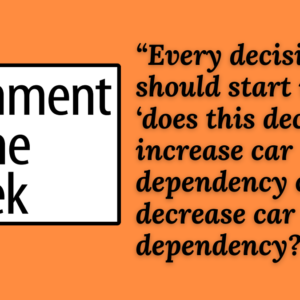Interesting seminar coming to PSU this Friday:
Friday, May 6, 2011
Room 204 of the Distance Learning Center Wing of the Urban Center on the Portland State University campus. 12pm-1pm.Speaker: Robert Schneider, UC Berkeley
Topic: How Do People Choose a Travel Mode? Factors Associated with Routine Walking & Bicycling
Abstract: Walking and bicycling are being promoted as transportation options that can increase the livability and sustainability of communities, but the automobile remains the dominant mode of transportation in all United States metropolitan regions. In order to change travel behavior, researchers and practitioners need a greater understanding of the mode choice decision process, especially for walking and bicycling.
This presentation will summarize dissertation research on factors associated with walking and bicycling for routine travel purposes, such as shopping. More than 1,000 retail pharmacy store customers were surveyed in 20 San Francisco Bay Area shopping districts in fall 2009, and 26 follow-up interviews were conducted in spring and summer 2010. Mixed logit models showed that walking was associated with shorter travel distances, higher population densities, more street tree canopy coverage, and greater enjoyment of walking. Bicycling was associated with shorter travel distances, more bicycle facilities, more bicycle parking, and greater enjoyment of bicycling. Respondents were more likely to drive when they perceived a high risk of crime, but automobile use was discouraged by higher employment densities, smaller parking lots, and metered on-street parking. Interviews suggested a five-step theory of how people choose travel modes. Walking and bicycling could be promoted within each step: awareness and availability (through individual/social marketing programs), basic safety and security (through pedestrian and bicycle facility improvements and education and enforcement efforts), convenience (through higher-density, mixed land uses and limited automobile parking), enjoyment (through street trees and supportive culture), and habit (through roadway and parking pricing).



Thanks for reading.
BikePortland has served this community with independent community journalism since 2005. We rely on subscriptions from readers like you to survive. Your financial support is vital in keeping this valuable resource alive and well.
Please subscribe today to strengthen and expand our work.